Detailed introduction of the University of Stuttgart:
Introduction
The University of Stuttgart is located in Stuttgart, the capital of Baden-Württemberg, Germany. It is a famous national university in Germany, a world-renowned university of science and engineering, and one of the oldest technical universities in Germany.
Overview
Number of students and faculty: The University of Stuttgart has a total of about 26,000 students and about 5,000 faculty.
Subject areas: Covering engineering, natural sciences, computer science, business management, humanities and social sciences, etc., offering about 160 bachelor's and master's degree programs.
History and establishment time
The predecessor of the University of Stuttgart was the Stuttgart Joint Technical Industrial School founded in 1829. Its establishment marked the beginning of the industrial era of Baden-Württemberg. In 1862, the school was formed by the merger of four higher technical schools of architecture, engineering, machinery and chemical engineering. In 1876, it was renamed the Higher Technical College. In 1900, it obtained the right to confer doctoral degrees in engineering disciplines. In 1967, it was officially renamed the University of Stuttgart.
School Strength
Teaching Strength: Teaching is closely integrated with practical applications and scientific research results, focusing on cultivating students' practical ability and innovative thinking. Through cooperative projects with enterprises and scientific research institutions, students can improve their professional skills in practice. For example, in cooperation with well-known companies such as Daimler and Bosch, students are provided with internship and graduation design opportunities, enabling them to apply what they have learned to actual engineering projects.
Scientific Research Strength: As one of the top universities of science and engineering in Germany, it has achieved fruitful scientific research results in the fields of engineering and natural sciences, and has many national and international scientific research projects. The school receives a large amount of scientific research funds every year to support the research of cutting-edge scientific research topics. For example, the research in the fields of automotive engineering, mechanical manufacturing, aerospace, etc. is at the international leading level, and has made important contributions to the industrial development of Germany and even the world.
Faculty: It has a high-quality faculty, including many internationally renowned scholars and experts. The teachers not only have outstanding achievements in academic research, but also have rich teaching experience and can provide students with high-quality teaching and guidance.
Institutional nature
Public university.
Educational philosophy
Emphasis on the combination of theory and practice, focusing on cultivating students' ability to solve practical problems, so that students can quickly adapt to the needs of future career development.
Attach importance to interdisciplinary education, encourage students to conduct cross-disciplinary learning and research in different disciplines, and cultivate students' comprehensive literacy and innovation ability to cope with complex and changing real problems.
Actively promote international education, strengthen cooperation and exchanges with universities and research institutions around the world, cultivate talents with international vision and cross-cultural communication skills, and enhance the school's influence in the field of international education.
Key laboratories and disciplines
Key laboratories: It has the first supercomputer center in Germany (Hazelhen), and also has a number of national and international key laboratories, such as the Fraunhofer Institute and the Max-Planck Institute. These laboratories carry out cutting-edge scientific research in related fields and provide students with a high-quality scientific research practice platform.
Key disciplines: Mechanical engineering, civil engineering, electrical engineering, materials science, chemical engineering, computer science, mathematics, chemistry and other disciplines have a high reputation and influence internationally. Among them, the major of mechanical engineering ranks among the best in the world, and majors such as civil engineering and electrical engineering are also at the world's leading level.
Department Settings
The school has the following departments:
School of Architecture and Urban Planning
School of Civil and Environmental Engineering
School of Chemistry
School of Geography and Biological Sciences
School of Electronic Information Technology and Computer
School of Aeronautics and Astronautics and Surveying
School of Mechanics
School of Mathematics and Physics
School of Philosophy and History
School of Economics and Sociology
Ranking
World ranking: In the 2024 QS World University Rankings, the University of Stuttgart ranks around 300 in the world.
Ranking in Germany: In the domestic university rankings in Germany, the University of Stuttgart usually ranks at the top and is a member of the TU9 Alliance of Nine Excellent Technical Universities in Germany.
Expenses
Tuition fees: As a public university in Germany, tuition fees are usually not charged, but a certain registration fee of about 150-300 euros is required each semester.
Living expenses: The living expenses in Stuttgart are relatively high. The monthly living expenses for students are about 800-1,200 euros, including accommodation, food, transportation, books, etc.
Campus
Campus environment: The campuses of the University of Stuttgart are distributed in many areas of Stuttgart, including the city center campus and the Vaihingen campus. The two main campuses are connected by subway, and the transportation is very convenient. The architectural styles on campus are diverse, integrating modern and traditional elements to create a strong academic atmosphere. The school is surrounded by beautiful environment, with cultural and leisure places such as parks and museums, providing students with a good learning and living environment.
Campus facilities: The school has modern teaching facilities and scientific research equipment, such as libraries, laboratories, computer centers, gymnasiums, etc., to meet students' learning, scientific research and physical exercise needs.
-
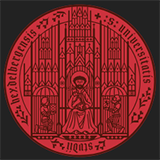
Heidelberg University
-
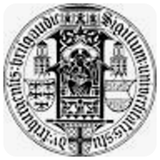
University of Freiburg
-
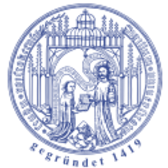
University of Rostock
-
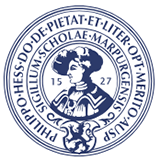
University of Marburg
-
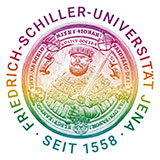
University of Jena
-
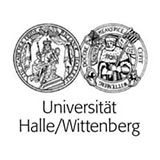
University of Halle-Wittenberg
-

University of Bayreuth
-

Leipzig University
-
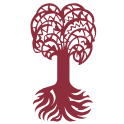
University of Tübingen
-
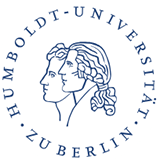
Humboldt University of Berlin
-

Mesoamerican University
-

Istmo University
-

Mariano Galvez University of Guatemala
-

Regional University of Guatemala
-

Galileo University
-

Francisco Marroquín University
-

Rafael Landívar University
-

University of the Valley of Guatemala
-

University of San Carlos of Guatemala
-

Technological Institute of Tlaxcala Plateau
-

Golfo University
-

Technological University of South Sonora
-

Technological University of Huejotzingo
-

Tizimín Institute of Technology
-

Chilpancingo Institute of Technology

